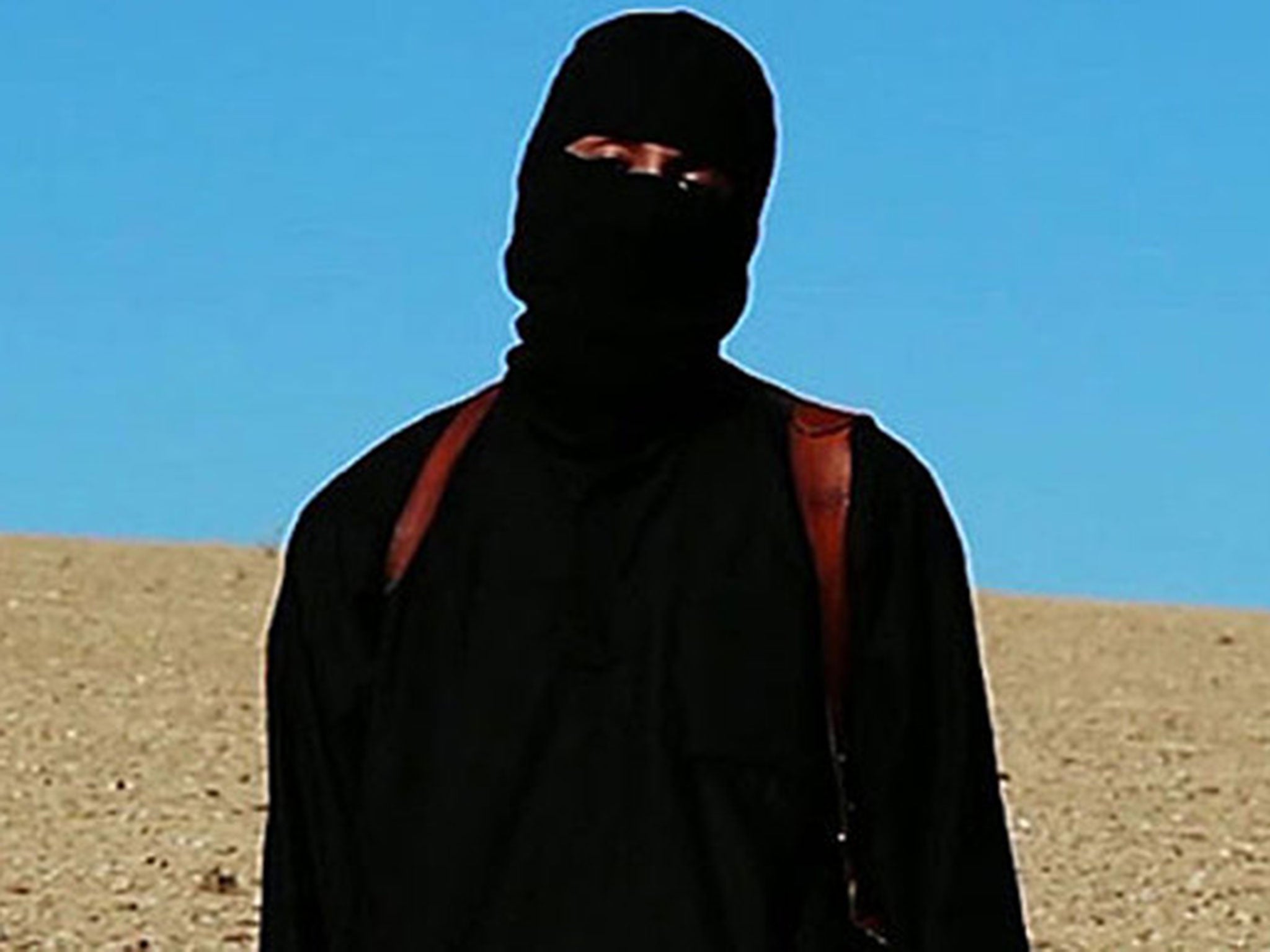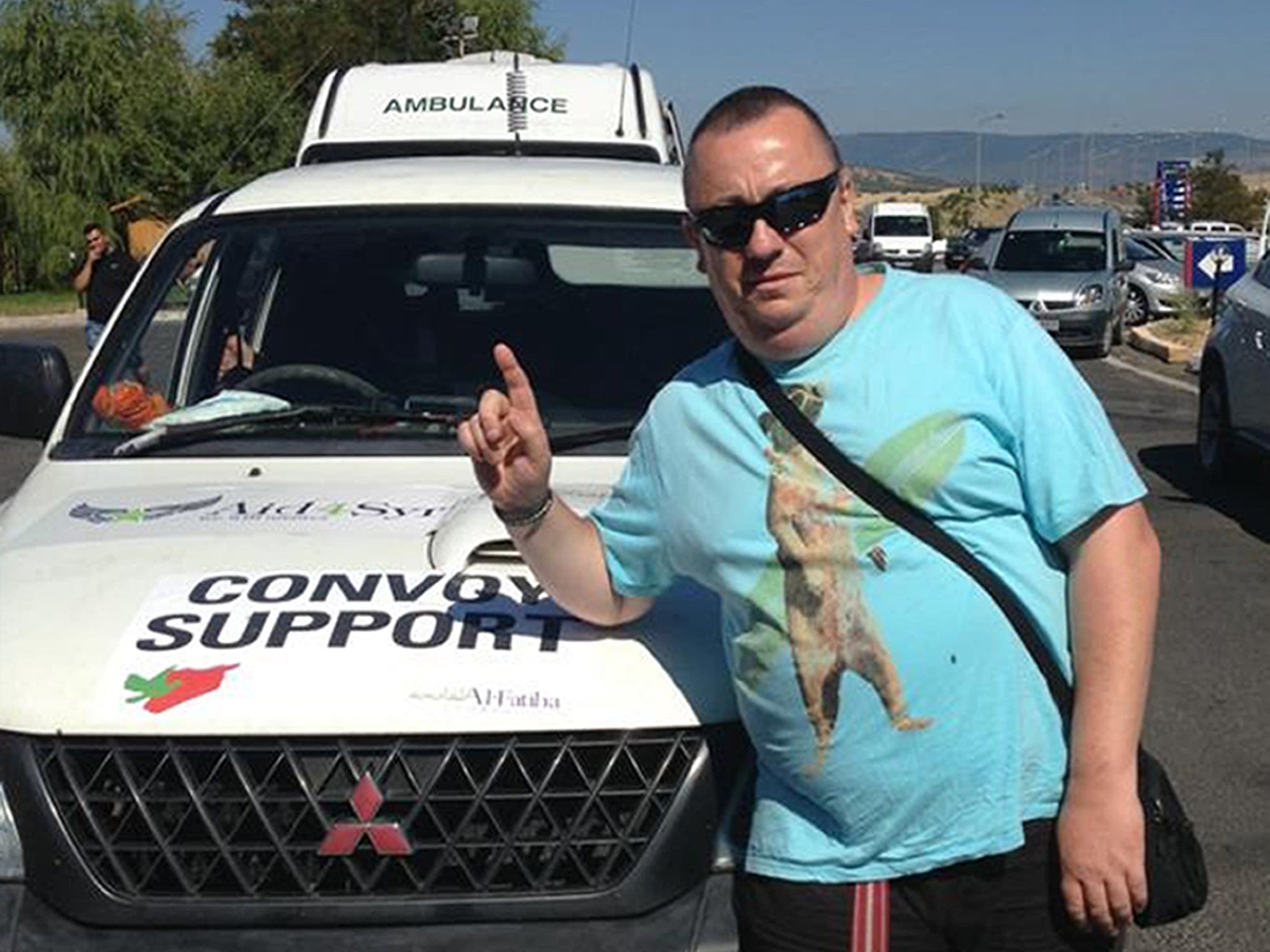'Jihadi John': Mohammed Emwazi – from British computer programmer to Isis executioner
The Pentagon is currently assessing whether the extremist has been killed in a drone attack in Syria.

Your support helps us to tell the story
From reproductive rights to climate change to Big Tech, The Independent is on the ground when the story is developing. Whether it's investigating the financials of Elon Musk's pro-Trump PAC or producing our latest documentary, 'The A Word', which shines a light on the American women fighting for reproductive rights, we know how important it is to parse out the facts from the messaging.
At such a critical moment in US history, we need reporters on the ground. Your donation allows us to keep sending journalists to speak to both sides of the story.
The Independent is trusted by Americans across the entire political spectrum. And unlike many other quality news outlets, we choose not to lock Americans out of our reporting and analysis with paywalls. We believe quality journalism should be available to everyone, paid for by those who can afford it.
Your support makes all the difference.The masked executioner who as “Jihadi John” came to embody the brutal violence of Isis was identified as a British computer programmer who was known to MI5 and police for at least four years before he slipped away into Syria.
Now, it has been reported US forces have targeted Mohammed Emwazi in an airstrike in Syria. A US official told the Associated Press news agency a drone attack was launched on a vehicle in the city of Raqqa, which was believed to be carrying the Isis militant.
Emwazi, a Kuwait-born Briton, lived in London for 17 years, he was the figure appearing in the succession of grim online videos in which Western hostages are beheaded which raised questions about the ability of the security services to monitor extremists.
As the world’s media descended on the addresses where Emwazi was raised – ranging from an £800,000 mansion block apartment in Maida Vale to his last-known address on a gritty west London estate – debate raged about how the well-dressed and pensive son of a minicab driver became the blood-soaked poster boy of Isis.
The 26-year-old, who had moved to England at the age of six, first came to the attention of MI5 in 2009. He was detained with two others while travelling to Tanzania for a safari holiday. Intelligence officers believed it was a cover for an attempt to join the al-Shabaab terror group in Somalia. His week-long detention in Africa, apparently on British orders, and questioning by an MI5 officer were revealed by The Independent in 2010 – although he then identified himself by a different name.
While studying at the University of Westminster, he had been connected with a group of men who were under surveillance by the security services. They played five-a-side football together and went to the same schools and mosques in west London. Three of them are now dead, several others are serving prison sentences and one is living in Sudan, stripped of his British citizenship.
The group included Bilal al-Berjawi and Mohamed Sakr, both of whom travelled to Somalia to join al-Shabaab. Berjawi is known to have risen to a senior position within the Islamist group before being killed in a US drone strike in January 2012.
After leaving university, Emwazi drifted between jobs as a computer programmer and made efforts to move abroad after gaining a foreign-language teaching qualification. He eventually left the UK in 2012 or 2013 after changing his name to Mohammed al-Ayan by deed poll. Campaigners from the human rights group Cage claimed yesterday that Emwazi had become the subject of a campaign of harassment by MI5 to try to persuade him to become an informant between 2010 and 2012.
Emwazi alleged that he had been prevented by the intelligence services from travelling to Kuwait, where he had a new job and a fiancée, and had been left feeling “like a prisoner” on British soil.
Asim Qureshi, research director of Cage, who was contacted by Emwazi over his complaints of intimidation, compared the Briton to the Woolwich killer Michael Adebolajo, who also claimed to have been the subject of recruitment approaches from MI5. He said both men had been the subject of “suffocating domestic policies aimed at turning a person into an informant but which prevent a person from fulfilling their basic life needs” and such actions had “left a lasting impression” on Emwazi.
Mr Qureshi caused anger by describing the Arabic-speaking Briton as “extremely kind, gentle and soft-spoken, the most humble young person I knew”.
Such words were at odds with the reality of Emwazi, a man happy to spout Islamist invective while being filmed as he raised a knife to the throats of kneeling victims who included the British taxi driver Alan Henning and the aid worker David Haines.
Officials dismissed any suggestion that Emwazi’s murders could be somehow linked to his encounters with British intelligence. A security source told The Independent that Emwazi had been a known member of an Islamist network and had been treated at all times in accordance with the law.
An MP said the parliamentary Intelligence and Security Committee was likely to seek answers from the security services about the information they held on Emwazi and their encounters with him.
Sir Menzies Campbell, a long-standing member of the ISC, said the case appeared to have “echoes” of the Woolwich killing of the soldier Lee Rigby and suggested a further increase in funding for the security services – recently raised by £130m – could be necessary. He said: “There’s no doubt that from time to time the security services have got to prioritise those upon whom they are conducting surveillance… It does seem to me that, once again, we have to look at the resources which are available.”
The identity of “Jihadi John”, which was first made public by The Washington Post but subsequently confirmed by security-service sources, is understood to have been known to British and American security officials for several months. It was kept out of the public domain while efforts were made to track him down in the hope of minimising the risk to remaining hostages.
Released captives said he worked with at least two other Britons and together they were dubbed “the Beatles”. Emwazi showed ruthlessness towards his victims, apparently participating in the waterboarding of hostages as well as their murders.
In Queen’s Park, the area of west London where Emwazi spent much of his youth, those who knew his family said they did not recognise him as the black-clad bogeyman of a global jihad.

One woman, who went to school with two of his sisters, said: “I’m completely shocked. When I knew him he was a quiet boy. I’ve looked at the videos and honestly I can’t tell if it is really him. I couldn’t believe the horrible things they say he’s done.”
Such incredulity was shared by Emwazi’s own family, who made it known through Cage that they did not accept he is “Jihadi John”.
After his identity was revealed, the family of one of his victims, however, said they were now a step closer to justice. In a statement, the family of Steven Sotloff said: “We want to watch him sentenced and see him sent to a prison to spend the rest of his days in isolation. That’s American justice; that’s how we deal with things in this country.”
Murdered by isis
James Foley
The American photojournalist was the first Western hostage to be beheaded by Isis. The 40-year-old, who was kidnapped in November 2012, said he was “drawn to the drama of the conflict”.
Steven Sotloff
The Jewish journalist, 31, had Israeli and US citizenship, but described himself as a “stand-up philosopher from Miami”. He was kidnapped in Syria in August 2013.
David Haines
The 44-year-old served in the RAF as an engineer and later worked for aid agencies. He was seized in March 2013 while surveying sites for refugee camps.
Alan Henning
The taxi driver, 47, from Salford, was so moved by the plight of refugees in Syria that he decided to help deliver medical equipment. He was captured in 2013.
Abdul-Rahman Kassig
The 26-year-old, who served in Iraq with the US Army, returned in 2013 to help refugees. He converted to Islam, changing his first name from Peter.
Kenji Goto
The video journalist, 47, from Japan, was described as a man of charm, vigour and confidence. He was captured last October and murdered in January.
Join our commenting forum
Join thought-provoking conversations, follow other Independent readers and see their replies
Comments